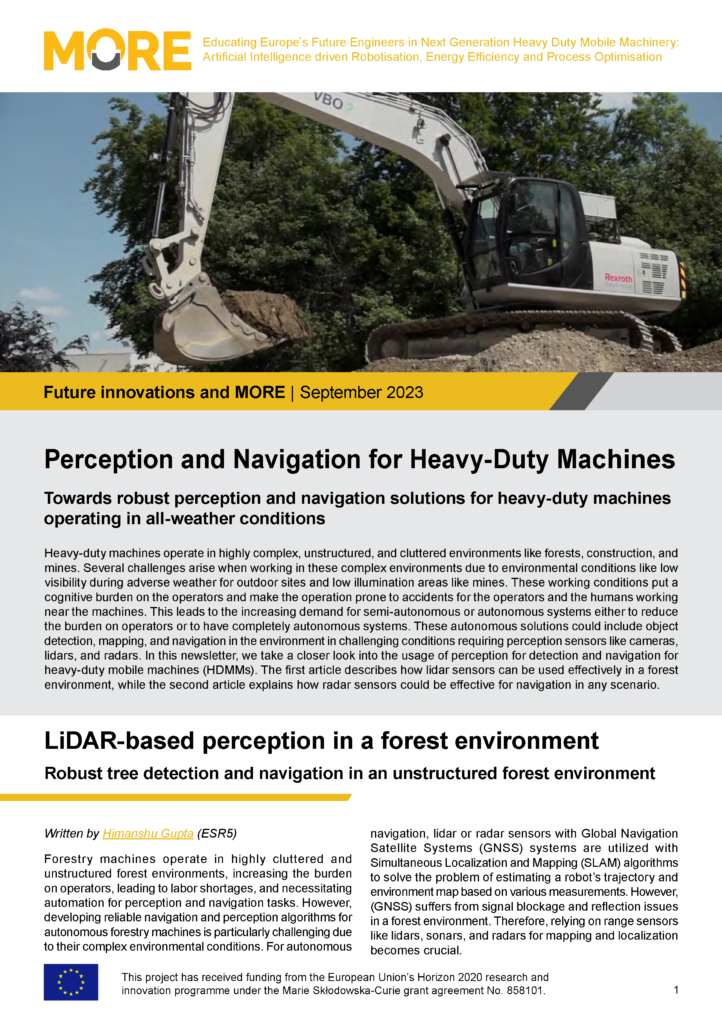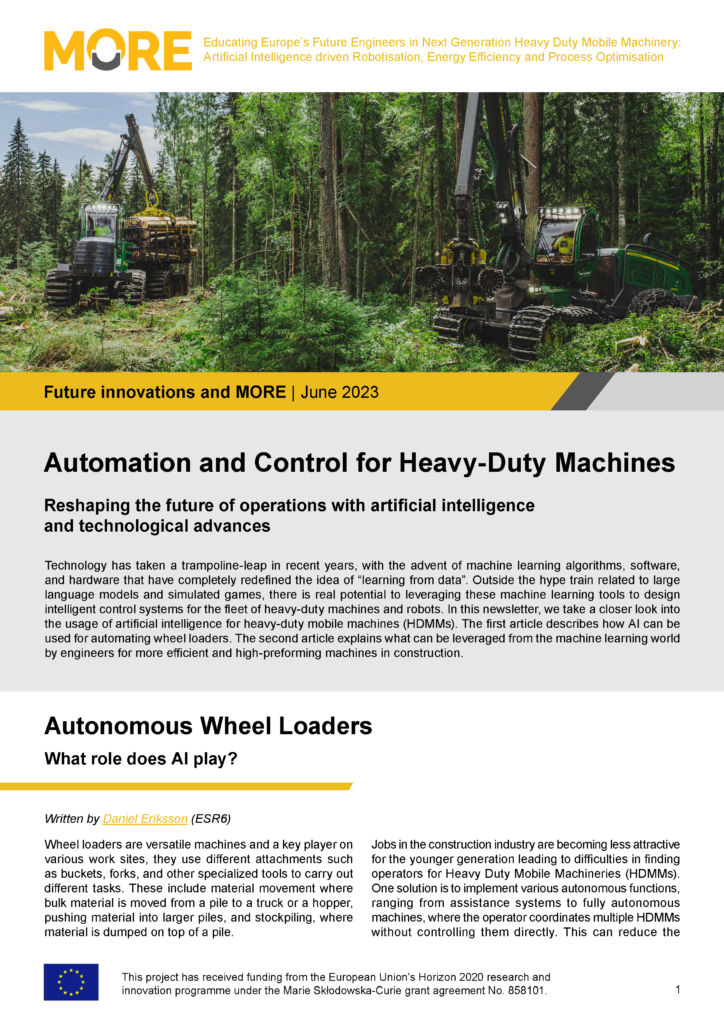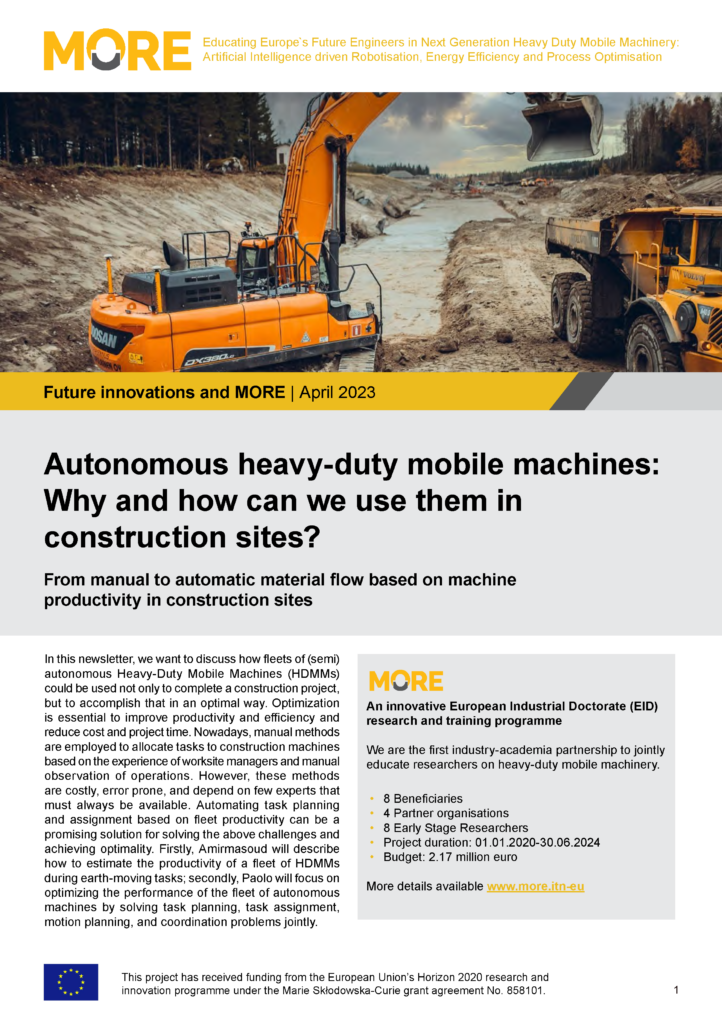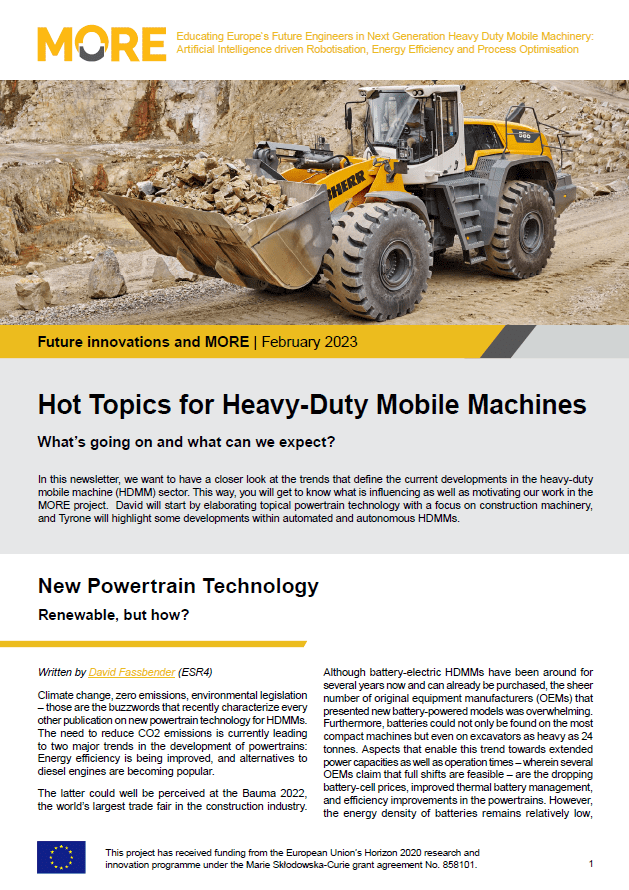Future innovations and MORE
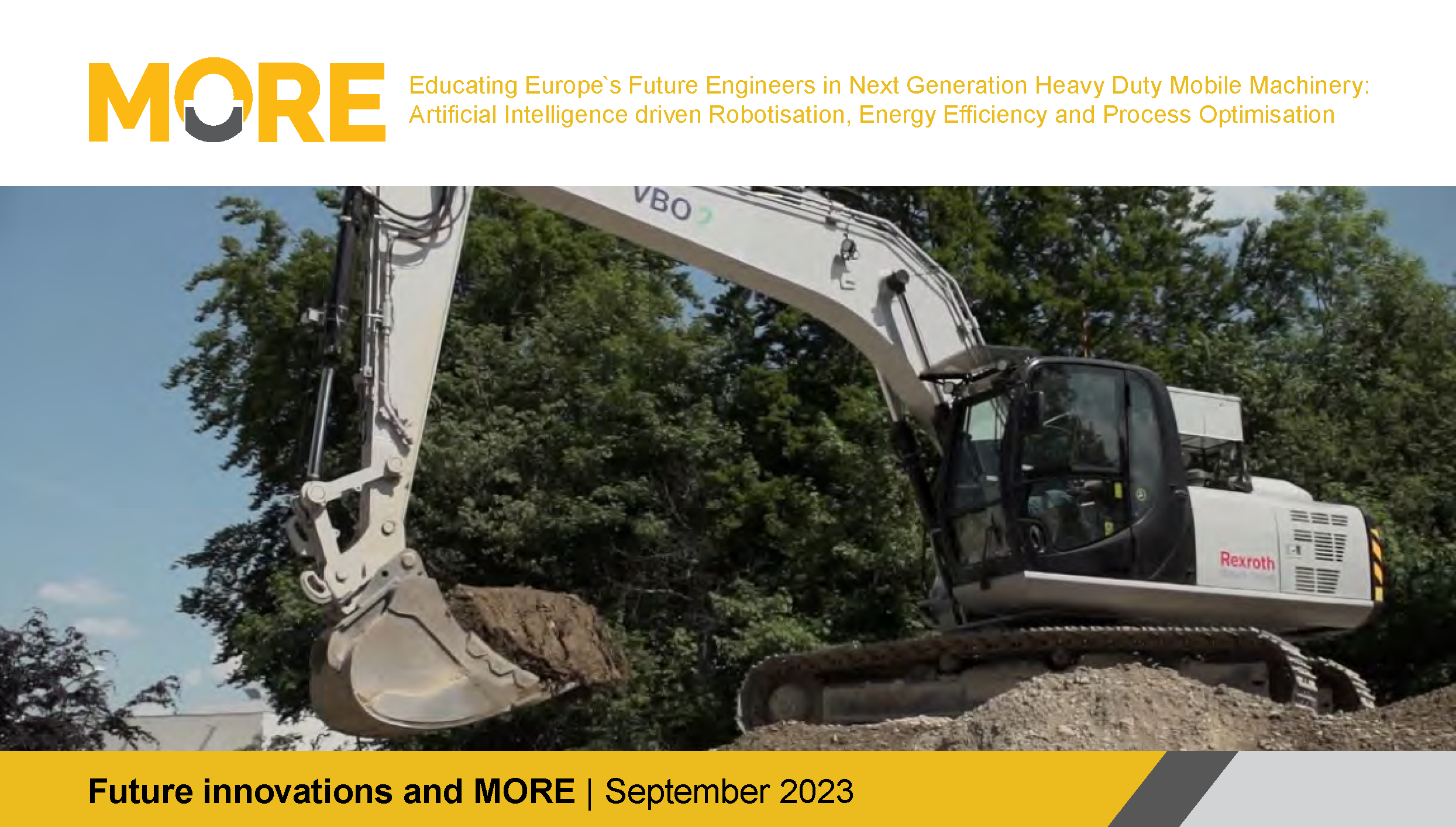
September 2023
Perception and Navigation for Heavy-Duty Machines
Towards robust perception and navigation solutions for heavy-duty machines operating in all-weather conditions
Heavy-duty machines operate in highly complex, unstructured, and cluttered environments like forests, construction, and mines. Several challenges arise when working in these complex environments due to environmental conditions like low visibility during adverse weather for outdoor sites and low illumination areas like mines. These working conditions put a cognitive burden on the operators and make the operation prone to accidents for the operators and the humans working near the machines. This leads to the increasing demand for semi-autonomous or autonomous systems either to reduce the burden on operators or to have completely autonomous systems. These autonomous solutions could include object detection, mapping, and navigation in the environment in challenging conditions requiring perception sensors like cameras, lidars, and radars. In this newsletter, we take a closer look into the usage of perception for detection and navigation for heavy-duty mobile machines (HDMMs). The first article describes how lidar sensors can be used effectively in a forest environment, while the second article explains how radar sensors could be effective for navigation in any scenario.
Articles
- LiDAR-based perception in a forest environment
Robust tree detection and navigation in an unstructured forest environment - Radar Perception for Heavy-Duty Mobile Machines
Ego-motion estimation using high-resolution radar data
June 2023
Automation and Control for Heavy-Duty Machines
Reshaping the future of operations with artificial intelligence and technological advances
Technology has taken a trampoline-leap in recent years, with the advent of machine learning algorithms, software, and hardware that have completely redefined the idea of “learning from data”. Outside the hype train related to large language models and simulated games, there is real potential to leveraging these machine learning tools to design intelligent control systems for the fleet of heavy-duty machines and robots. In this newsletter, we take a closer look into the usage of artificial intelligence for heavy-duty mobile machines (HDMMs). The first article describes how AI can be used for automating wheel loaders. The second article explains what can be leveraged from the machine learning world by engineers for more efficient and high-preforming machines in construction.
Articles
- Autonomous Wheel Loaders
What role does AI play? - Automatic Control for Heavy Duty Machines
Machine learning-based control systems for hydraulic loader cranes and wheel loaders
April 2023
Autonomous heavy-duty mobile machines: Why and how can we use them in construction sites?
From manual to automatic material flow based on machine productivity in construction sites
In this newsletter, we want to discuss how fleets of (semi)autonomous Heavy-Duty Mobile Machines (HDMMs) could be used not only to complete a construction project, but to accomplish that in an optimal way. Optimization is essential to improve productivity and efficiency and reduce cost and project time. Nowadays, manual methods are employed to allocate tasks to construction machines based on the experience of worksite managers and manual observation of operations. However, these methods are costly, error prone, and depend on few experts that must always be available. Automating task planning and assignment based on fleet productivity can be a promising solution for solving the above challenges and achieving optimality. Firstly, Amirmasoud will describe how to estimate the productivity of a fleet of HDMMs during earth-moving tasks; secondly, Paolo will focus on optimizing the performance of the fleet of autonomous machines by solving task planning, task assignment, motion planning, and coordination problems jointly.
Articles
- Productivity Monitoring
What is the productivity, and how can it be calculated? - Material flow coordination and optimization
Let the robots build it
February 2023
Hot Topics for Heavy-Duty Mobile Machines
What’s going on and what can we expect?
In this newsletter, we want to have a closer look at the trends that define the current developments in the heavy-duty mobile machine (HDMM) sector. This way, you will get to know what is influencing as well as motivating our work in the MORE project. David will start by elaborating topical powertrain technology with a focus on construction machinery, and Tyrone will highlight some developments within automated and autonomous HDMMs.
Articles
- New Powertrain Technology
Renewable, but how? - The Road Towards Autonomous Heavy-Duty Mobile Machinery
Be Prepared for a Few Bumps Along the Way
